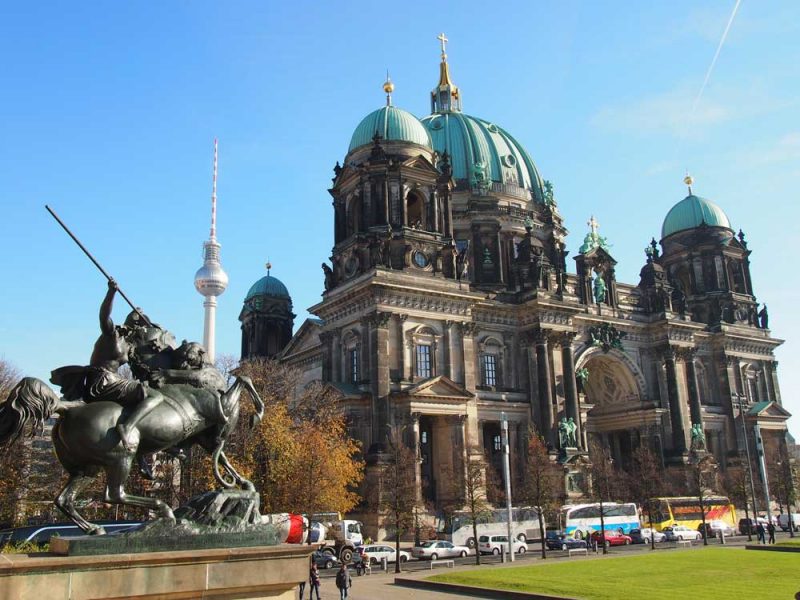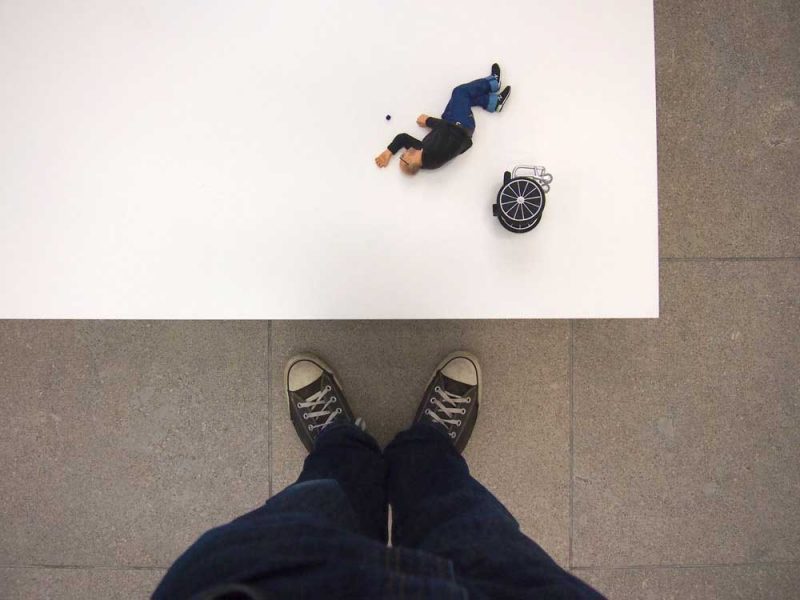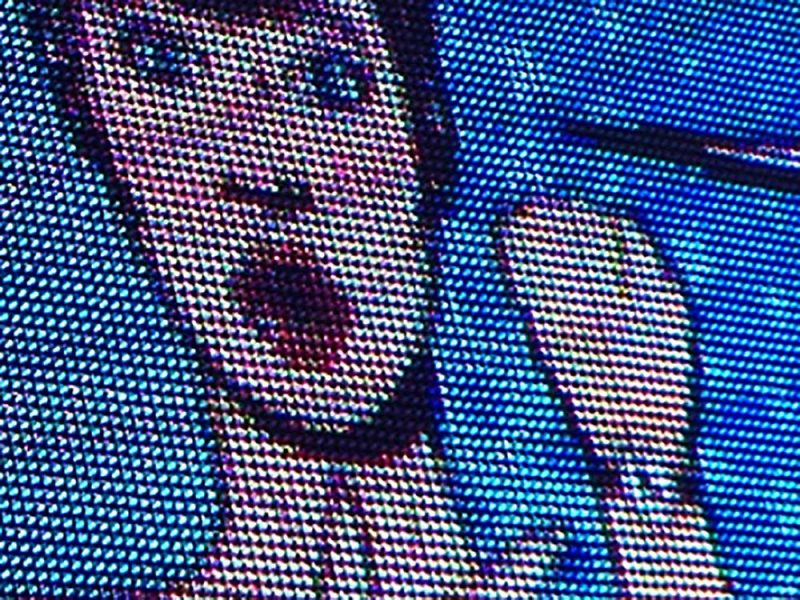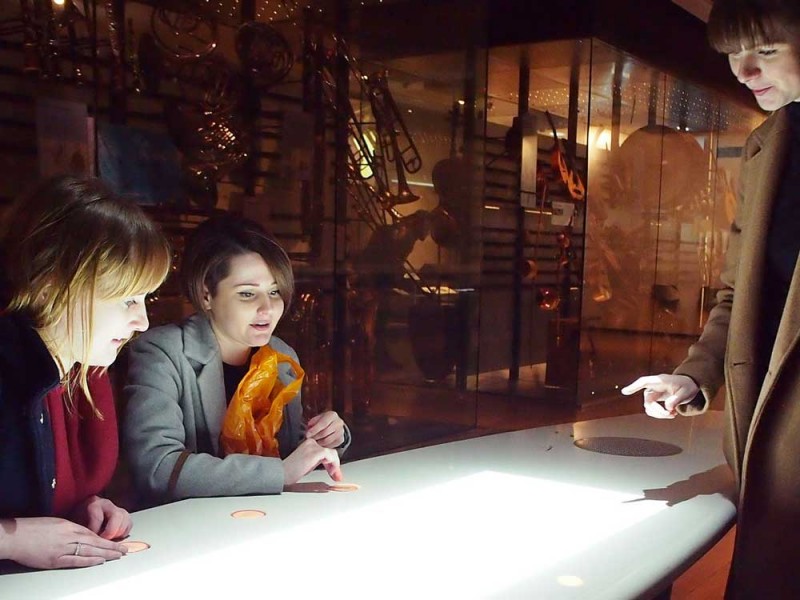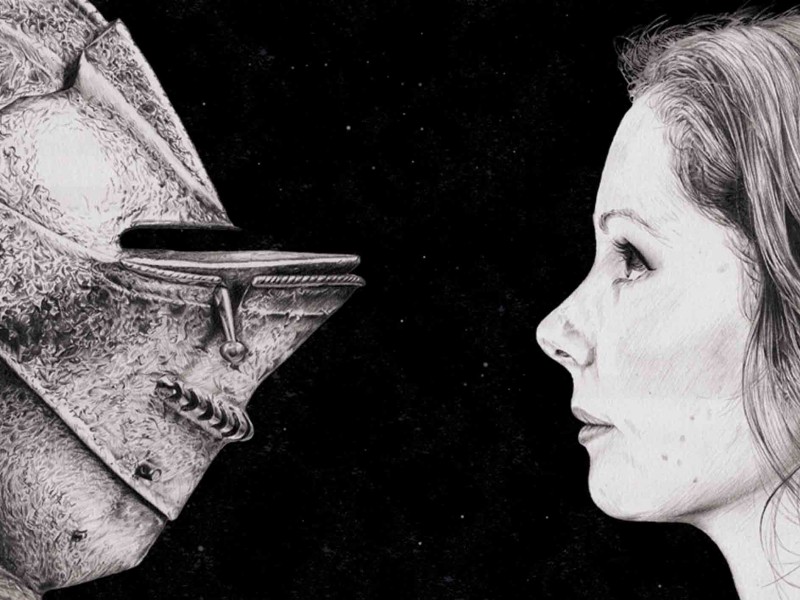Day three of a week of cultural tourism in Berlin.
Cultural Berlin – Day 3

After the antiquities of day two we chose a less academic series of trips for day three.
Once again, we started with the long walk down Karl-Marx-Allee to the Computer Spiele (Games) Museum.
After a patchy history of on and offline exhibitions, the museum opened a permanent exhibition in 2011 and has proved incredibly popular.
Intelligently displayed, the exhibition is a great mix of levels of information, visitors can scan the surface to discover the basics or dig deeper to find more of the story. There are also plenty of working arcade games so younger visitors (like our sons) can experience the thrills of jumping a digital frog across the road, or firing lines from a triangle into outlines of asteroids.
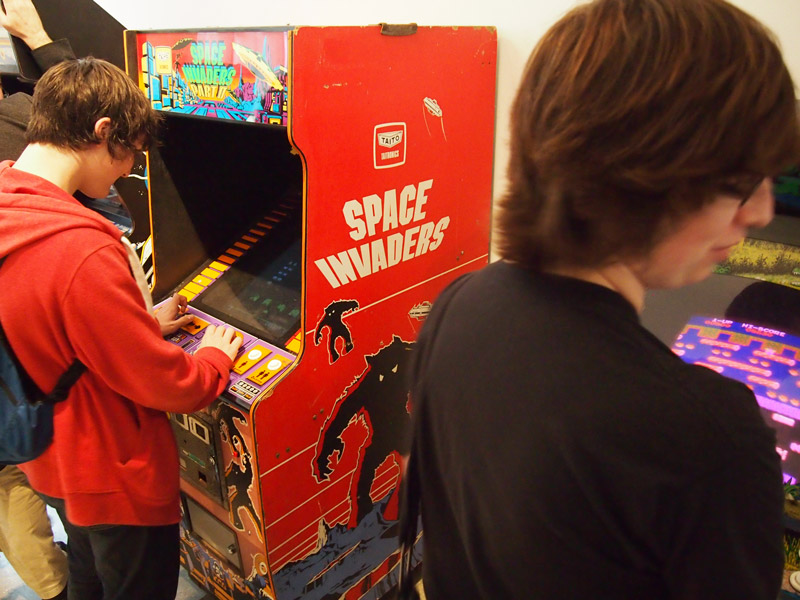
There was plenty of insight: ZX Spectrums had allowed for a generation of coders in the UK, whilst West German children had little access to programming whilst using Commodore 64 machines. GDR children were given access to computers in school but computers and consoles were prohibitively expensive for home use.
It was slightly depressing to see many of the technologies that I had owned, now housed in display cases to be gawped at, but nostalgia doesn’t make me want to go back to the time of loading games via a tape deck.
It took hours to drag our sons off the Space Invaders machines but eventually we got out and headed for the Underground train to Potzdamer Platz.
Potzdamer Platz was most famously the world’s biggest building site after German reunification. Now it is home to some of Berlin’s most interesting architecture, bars and museums.
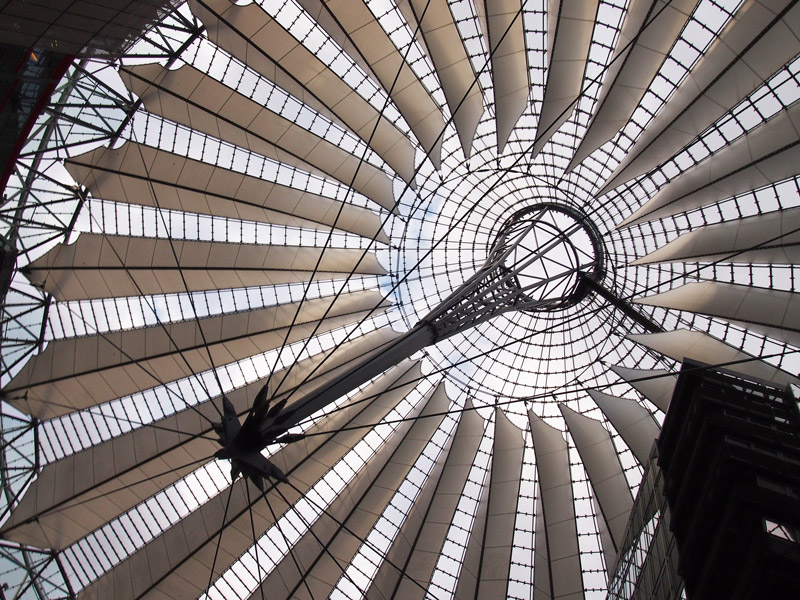
Between the streaming traffic, we walked down the slightly contrived pavement of stars (with some nice ‘viewing points’ that impose images onto the street) and across into the Museum Für Film und Fernsehen.
This is a stunning exhibition of German film and filmmakers. It’s not part of the state museum system but our Museum Passes got us a 50% discount on tickets (€3 for an adult, €2 children).
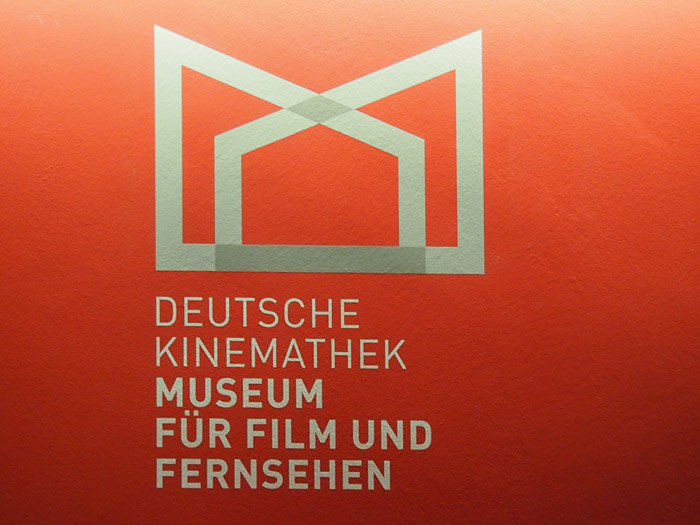
The museum is beautifully conceived and executed, across a couple of floors, and is part of a large cinema and education complex (a bit like the NFT when Museum of Moving Image was there). They have wonderfully designed branding, posters, wayfinding and interpretation, and their reception staff were the friendliest we’d encountered. I can’t fault it in any respect.
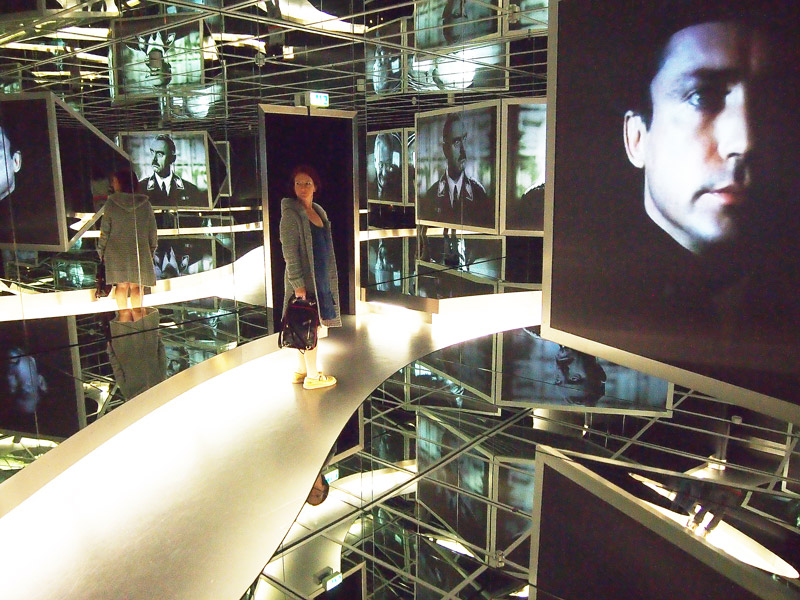
The collection is great and tells the full story of German cinema (with an awful lot of space devoted to Marlene Dietrich). It’s such a well-conceived story of 20th century cinema that I suspect they are already starting to have problems, accommodating new stories (living filmmakers are given a small gallery of headshots) but it’ll be another decade or so before that feels anachronistic.
Next stop was just around the corner to Dali Berlin.
I’m not really sure the Dali museum knows what it wants to be, or maybe it has had to try many different things to keep up visitor numbers. The publicity features a painting of Dali, by someone else, and the big splash on the leaflets is ‘get a free coffee’ (which turned out to be so unpleasant that we didn’t even want it for free).
Inside it feels like a once slick, modern gallery. There’s a clever logo in gold-foil on the tickets (we got a small discount that made it €8,25, no concessions) and the building is stunning. But it’s a far from smooth operation. It’s understaffed and already pretty tatty; bags are not allowed but there is no cloakroom so bags are piled around the reception desk.
The collection is of lithographs and other prints. There’s some lovely, unexpectedly artful illustrations, and some interesting educational films on printmaking. I actually found it much more interesting that I’d expected but, if you are a fan of Dali’s painting and sculpture, I’d guess you’d be pretty disappointed.

To end the day, we thought we’d pop in to the Kulturforum, just round the corner. This is a complex of museums, galleries and the Berlin Symphonie. We wanted to just have a look round at the stunning architecture but the Berlin Symphonie proved to be the least welcoming building in Berlin. Huge rope barriers prevented us from seeing anything but the unfriendly box office. Still, at least I got to add to my No Photography signs collection.
Disappointed, we wandered towards the Reichstag, where we’d pre-booked a visit to the Norman Foster glass dome and roof terrace.
Visiting the Reichstag is free but you have to book well in advance through a series of complicated forms and emails. The actual visit is similarly bureaucratic. Passport scans, body scans and bag scans in a portacabin, gathered in a holding area, escorted in groups to the main security check-point, held in an airlock and scanned again. There was no photography but I was too scared to take pictures of the signs.
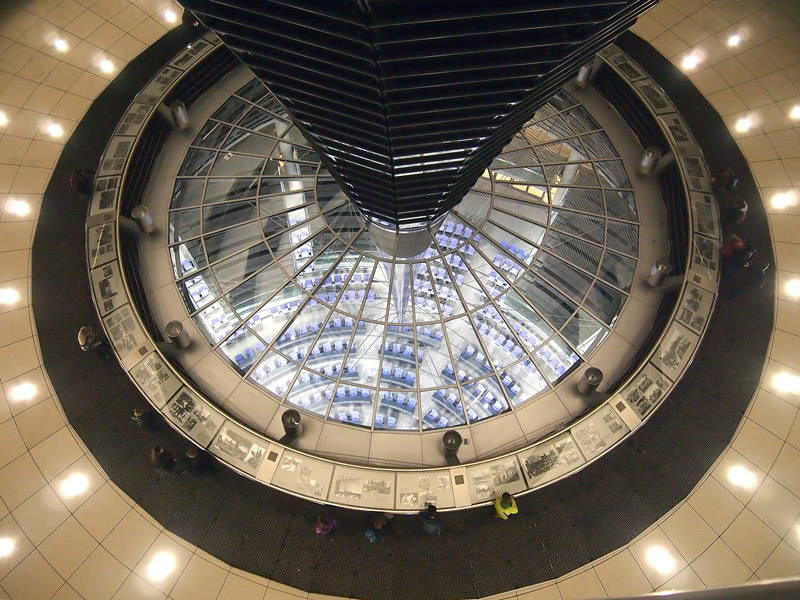
Once inside, you’re left alone, with an included audio guide. Foster’s huge glass dome is directly above the debating chamber, with an open centre that lets cool air in and the hot air out. Spiral ramps take you gently up to the open top, with points in the floor, triggering the audio guides with details of the building environmental credentials, and the impressive views.
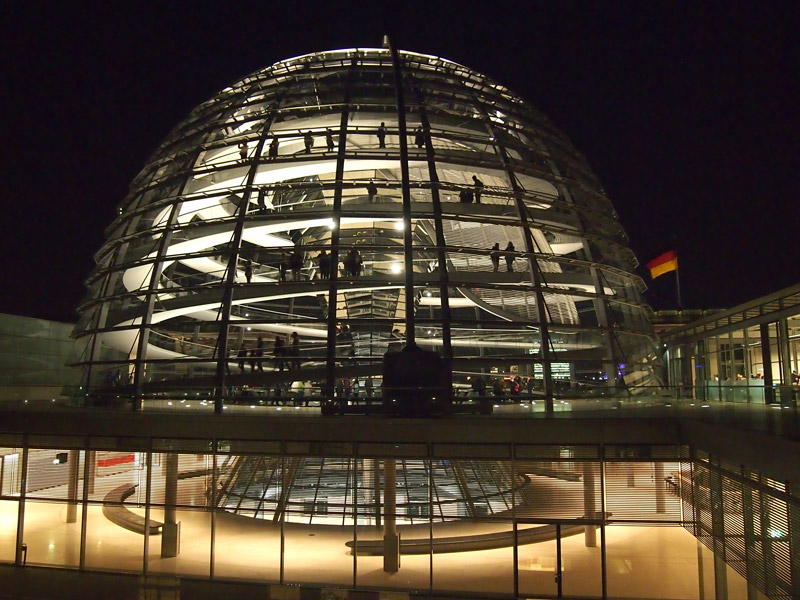
The recommissioning of the Reichstag was a powerful confirmation of confidence in the reunification experiment; the roof terrace and dome are a stunning public statement of that confidence.



